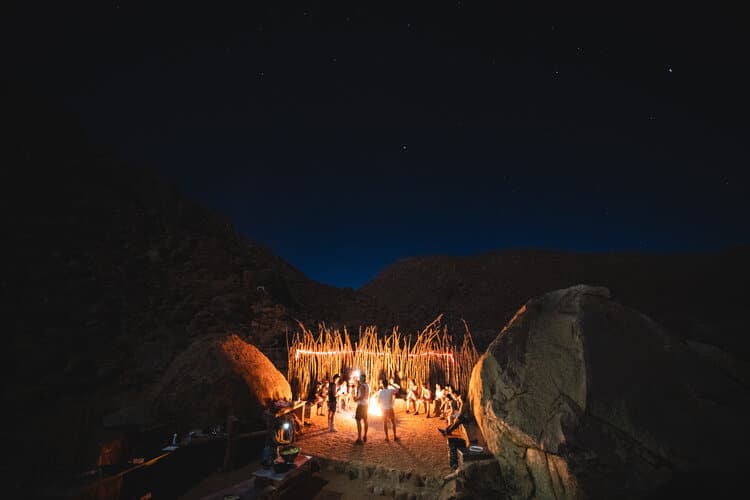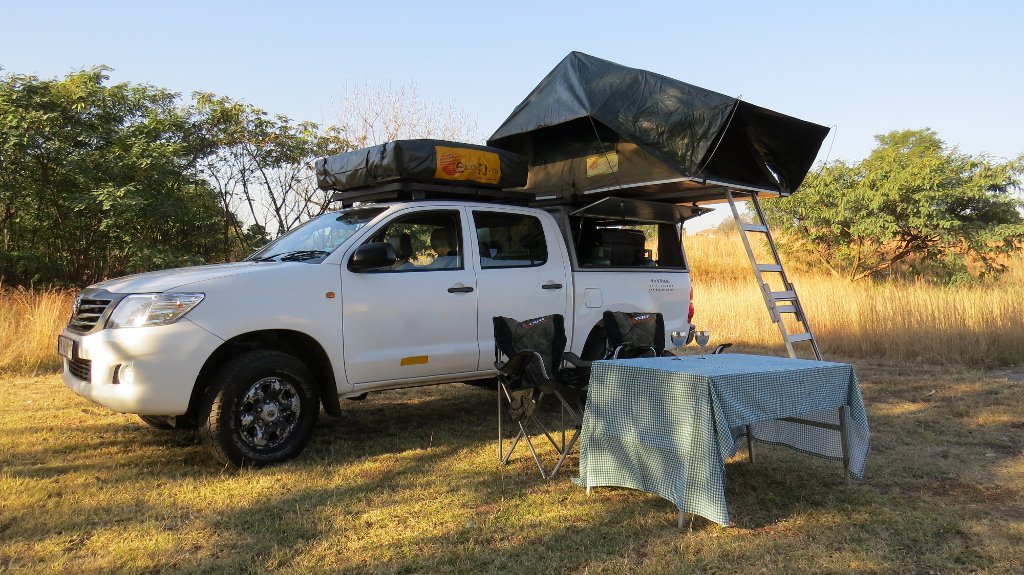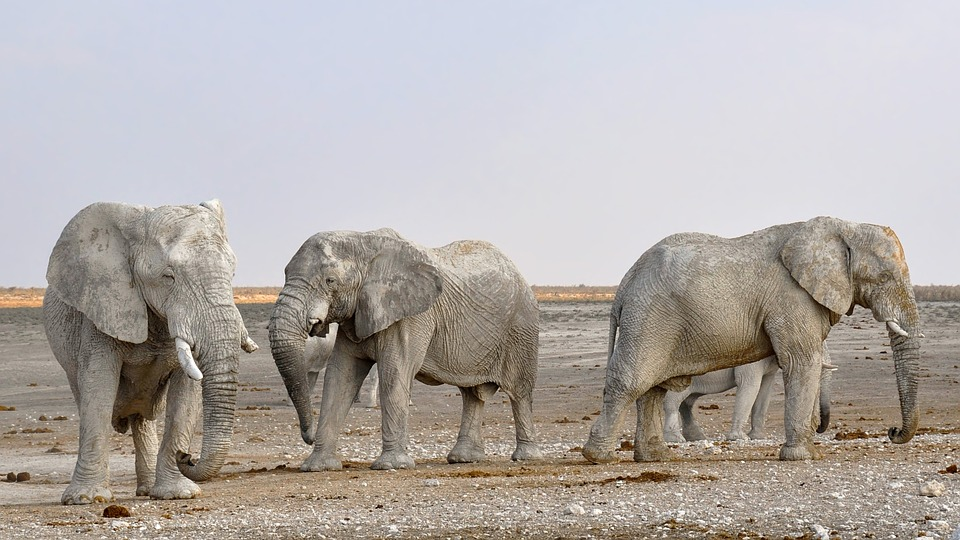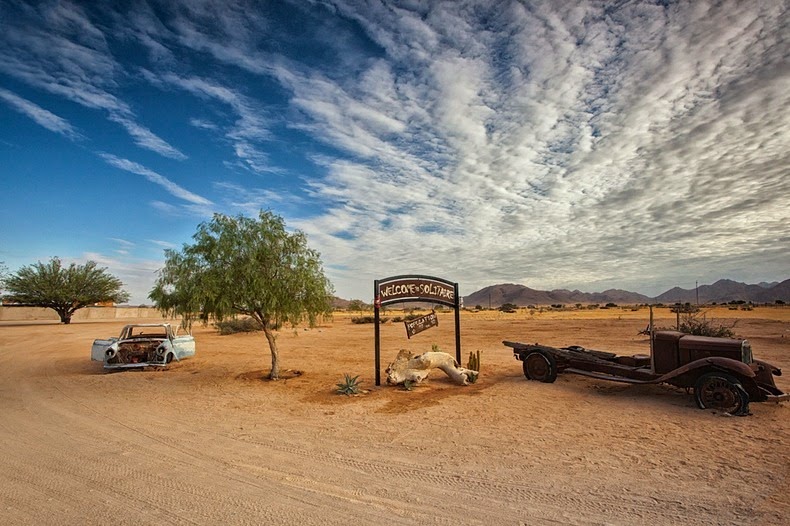
The All-New Renault Duster is Here
After a two-year absence from the South African market, the mighty Renault Duster is back...
 12 March 2025
12 March 2025 
Namibia is increasingly being recognised as one of the world’s top self-driving destinations. Its stunning landscapes, unique attractions, diverse wildlife and good infrastructure make it ideal for self-driving. However, it’s essential to be well-prepared, have the right vehicle, carry enough water and supplies, and always let someone know your planned route and expected return.
With its vast and frequently remote landscapes, self-driving in Namibia requires meticulous forward planning. You need to decide ahead of time what route you’ll be following, how long your trip will be, where you’ll be staying over, and where you’ll be refuelling.
Here are a few essential points to include:
Decide where you’d like to stay and arrange your accommodation well ahead of time.

Ranch Koiimasis Campfire
This is particularly important if you’ll be travelling in some of the remoter regions. Windhoek is Namibia’s biggest city with the widest choice of accommodation options, ranging from hotels, lodges, guest houses, self-catering units to a wide selection of camping options.
Swakopmund is also a popular destination especially for visitors who want to explore the Skeleton Coast. Wildlife-rich Etosha National Park’s rest camps offer visitors a range of accommodation, as well as restaurants, shops and petrol stations. Familiarise yourself thoroughly with your planned route. It’s vital that you know what road surfaces you’ll be travelling on.
Tarred roads:
Gravel roads:
Don’t Underestimate the Distances in Namibia
Distances in Namibia are huge, so you’ll need to factor that into your driving time. Google Maps can help here, but the quality of the road surface and the permitted driving speed can throw a spanner in the works. Allow adequate time to get to your destination before dark, so best to start early in the morning.

Road in NamibRand Nature Reserve, Namibia.
Ensure you have comprehensive vehicle and travel insurance. It should be customised to self-driving in remote locations, and cover medical emergencies, vehicle breakdowns, and any other unforeseen eventualities. And another tip – make sure you read the small print in your car hire agreement – you don’t want to be caught napping by any exclusions!
Important Documents:
Clothing:
Camping and Outdoor Gear (if camping):
Personal Items:
Photography and Electronics:
Food and Water:
Navigation and Communication:
Miscellaneous:
Optional items (based on individual needs):
The Namibian landscape isn’t forgiving for any vehicle! You should really consider renting a sturdy 4×4 with substantial ground clearance. Such a vehicle will offer both comfort and durability, and impact the safety and enjoyability of your trip.
Here are a few useful pointers about driving in Namibia:
People often ask if you can self-drive in Namibia in a regular car, and the answer is, yes, you can. But, and this is a significant but, it’s really not advisable. Your journey will almost certainly be slow, uncomfortable and less safe.

Renting a car Namibia
Here are the reasons why – while the major highways linking the bigger centres like Windhoek and Swakopmund are tarred, the majority of roads you’ll be self-driving on will be gravel roads. Here you really need a vehicle with robust tyres and a high road clearance for safety and comfort, hire a 4×4.
Being informed about road conditions and the weather in Namibia is crucial for several reasons. The weather in Namibia can change rapidly from sun to rain, and that can make dirt roads muddy, slippery, and even impassable. Heavy rainfall can also lead to flash floods that pose a severe risk for vehicles. Weather also influences wildlife movements, so being aware of the weather can help prevent collisions with wildlife unexpectedly crossing roads.
Being informed will also maximise your experience like having clear skies for stargazing or cooler temperatures for hiking. Some lodges or campsites might even not be accessible during heavy rainfall. And finally, being clued up about road conditions and the weather will make you safer as you can avoid areas that pose a risk.
Namibia’s gravel and sand roads present their own set of challenges. It’s important to maintain a moderate speed, and good following distances particularly to avoid dust.
Here are a few general tips to guide you:
We’ve touched on this before, but it really does bear repeating. Self-driving in Namibia demands self-sufficiency. Ensure your vehicle is equipped with ample water, food, a first aid kit, a spare tyre, essential tools, and other emergency items.
It’s far better to be over-prepared than to be caught short of some essential. And if you’re going to be doing some serious off-roading on some of Namibia’s famous 4×4 trails, we urge you strongly to do it in convoy rather than on your own.
Namibia’s diverse wildlife is one of the country’s greatest treasures, and the Namibians rightly value it highly and expect their visitors to do the same. You therefore need to drive at a safe speed so that you can avoid any animals on the roads. You have to stay on the designated roads and trails as off-roading can damage delicate ecosystems and habitats.
If you are forced to travel at night, you need to be especially vigilant. Never feed wild animals as this can lead to dependency and aggressive behaviour. If you’re camping make sure all food is safely stored and inaccessible to animals. Maintain a respectful and safe distance from ant wild animals, and keep any noise to a minimum. Always respect No-Entry Zones as they’ll be there for a good reason like safety, a particularly sensitive habitat or a nesting ground.

Elephants, Namibia
If you’re camping, stick to the camping regulations and never leave any trash around. Either dispose of it in the containers provided or take it with you. Always use designated campsites and practise the leave-no-trace principle. Don’t make new fire pits, and make sure any fire is completely out before you leave.
It’s also a good idea to educate yourself a bit about the local wildlife, their habitats and behaviour patterns before you travel. And if you feel like supporting local conservation or wildlife rehabilitation, Namibia and its gorgeous animals will thank you!
We’ve mentioned this before, but again this very much bears repeating. Unless you absolutely have to, avoid driving at night. Many animals are active at night, or they sleep on or near the road which retains welcome heat it absorbed during the day.
If the road has potholes, these are also more difficult to spot and avoid at night. It’s therefore much better to make an early start and arrive at your destination before dark.
Distances between petrol stations can be vast in Namibia where towns can be hundreds of kilometres apart. It’s therefore essential to refuel whenever you have a chance.

4×4 Adventures, Sossusvlei, Namibia
Be careful of relying on road maps for the location of petrol stations, as these maps may not have been updated. Most petrol stations in Namibia have attendants who’ll fill your tank and clean your windscreen. It’s polite and customary to reward them with N$5 tip for performing this service.
This may sound mundane and self-evident, but not everybody knows how! Namibia’s dirt roads can take a grim toll on your vehicle’s tyres and cause punctures. Carry at least one spare wheel with you as well as a jack so you can change a wheel.
A successful self-drive in Namibia depends on thorough preparation, having the right vehicle, and respecting the country’s laws, environment, wildlife, and people.
Whatever your routes and destinations, Drive South Africa has the right vehicle for you. So whether you need a muscly 4×4, spacious RV or compact camper van for your trip, we’ll supply you with the perfect vehicle. We’ll also give you plenty of guidance about self-driving in Namibia and even show you how to change a tyre!